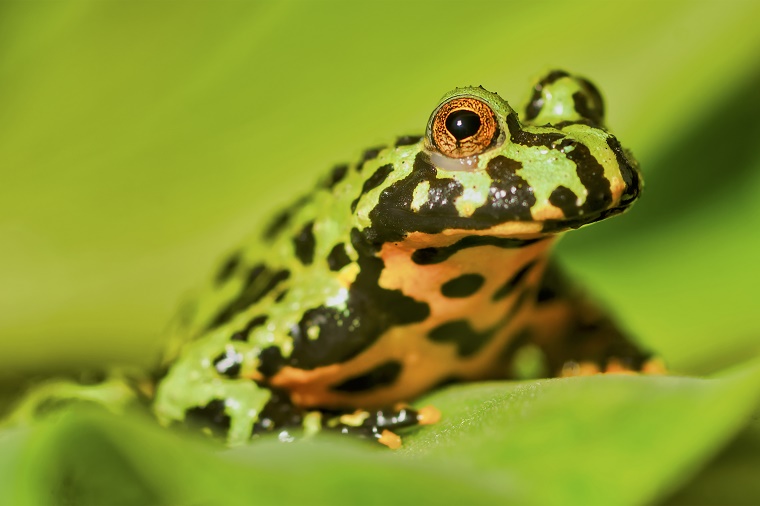The Evolution of Learning and Behavior: How Toads Could Unlock the Complexities of Human Behavior
By Erin Seto
28 June 2021

As humans, we learn and adjust our behaviours effortlessly, but it involves complex processes that are not well understood.
In contrast, amphibians have relatively simple behaviours and brain organization, making them the perfect candidate for teasing apart the intricacies of how learning influences behaviour.
“The human brain is very complex and difficult to understand, therefore by looking at simpler brains and how they evolved we can highlight some basic principles that are hopefully applicable to human brains,” says Dr. Frederic Laberge, an associate professor in the Department of Integrative Biology.
Laberge and undergraduate researchers Sarah Ouellet and Amber Lavictoire recently published a study on fire-bellied toads that gives new insight into how these animals learn.
Over two experiments, the team tested the ability of the toads to learn, through training, where water was located in their environment. The study ultimately showed that the toads were capable of spatial learning, but some of the results came as a surprise.
In the first experiment, 48 adult toads were trained for six consecutive days in a T-shaped maze. A container of water was placed in one arm of the maze, and a container of concentrated saline solution in the other. In each daily training session, the toads were given three chances to find the container of fresh water. Half of the toads were dehydrated, to determine if thirst would motivate the toads to learn more quickly.
In the second experiment, 16 toads were trained for a much longer period - four weeks. However, this time the maze did not contain a saline solution. Instead, the maze had an accessible container of water at one end and an inaccessible container of water at the other end.
In both experiments, the researchers could tell if the toads were learning based on which side of the T-maze they went to first. If the toads chose the side with accessible fresh water, this showed they were learning.
During the first experiment, there was no evidence that the toads were learning where the water was in the maze. This surprised the team, as a similar experiment published in 1990 found otherwise.
This experiment also revealed another surprise: if a toad came into contact with the concentrated saline solution, it became discouraged from exploring the maze altogether. This meant that having a negative stimulus did not help the toads learn.
Based on their results, the team was skeptical that the toads could actually learn the location of water in the maze. However, they decided to conduct the second experiment to see if a longer training period would make a difference.
This time, with four weeks of training, the fire-bellied toads were indeed able to learn where the water was located – but this learning was also tied to their hydration status. Only toads that were dehydrated during the training sessions, and thus motivated to find water, were able to learn its location.
Thanks to these and other studies that are shedding new light on what it really means to learn and change behavior, a better understanding of some core human processes may not be that far out of reach!
But that’s not all this study provides. Laberge points out that this research is also a prime example of the importance and value of research contributions from undergraduates.
“Training the next generation of scientists begins at the undergraduate level.”
Undergraduate researchers Eric To, Janel Kuska, Zummara Tanwir and Sarah Morton also contributed to preliminary work that set the stage for this work. Funding was provided by the Natural Sciences and Engineering Research Council of Canada.
Read the full study in the journal Learning and Motivation.
Read about other CBS Research Highlights.